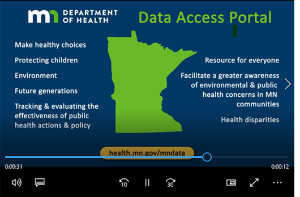MN Public Health Data Access Home
MN Public Health Data Access Portal
Environmental public health data can be used to inform policies, change behavior and help communities uncover issues to develop solutions and protections for the hazards, exposures and socioeconomic factors that influence our health. Search here to find environmental issues, trends, geographic patterns and disparities in Minnesota.

